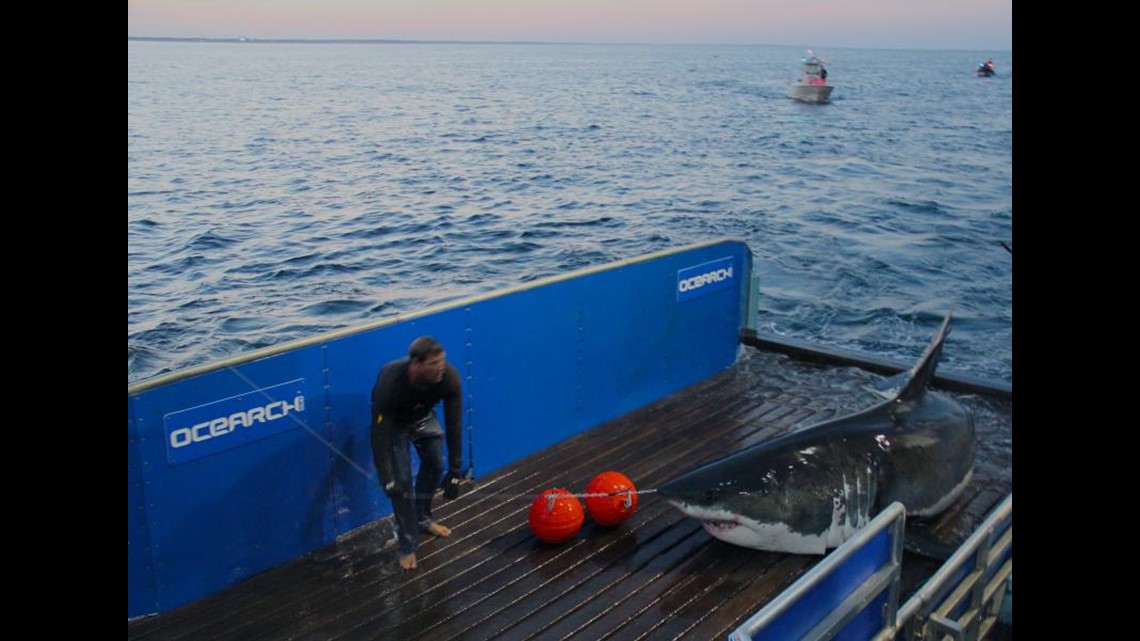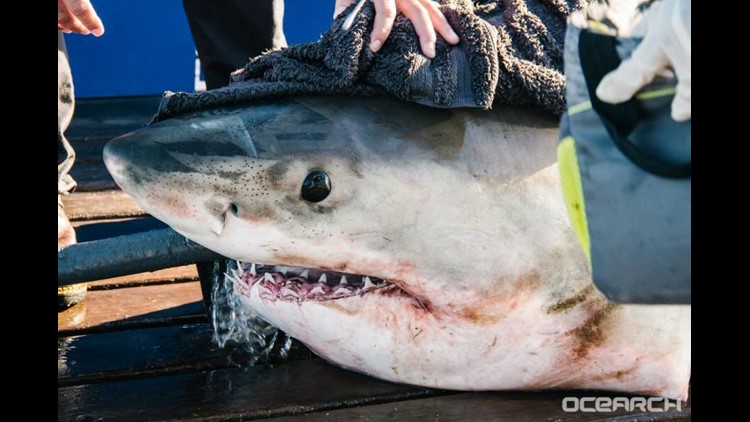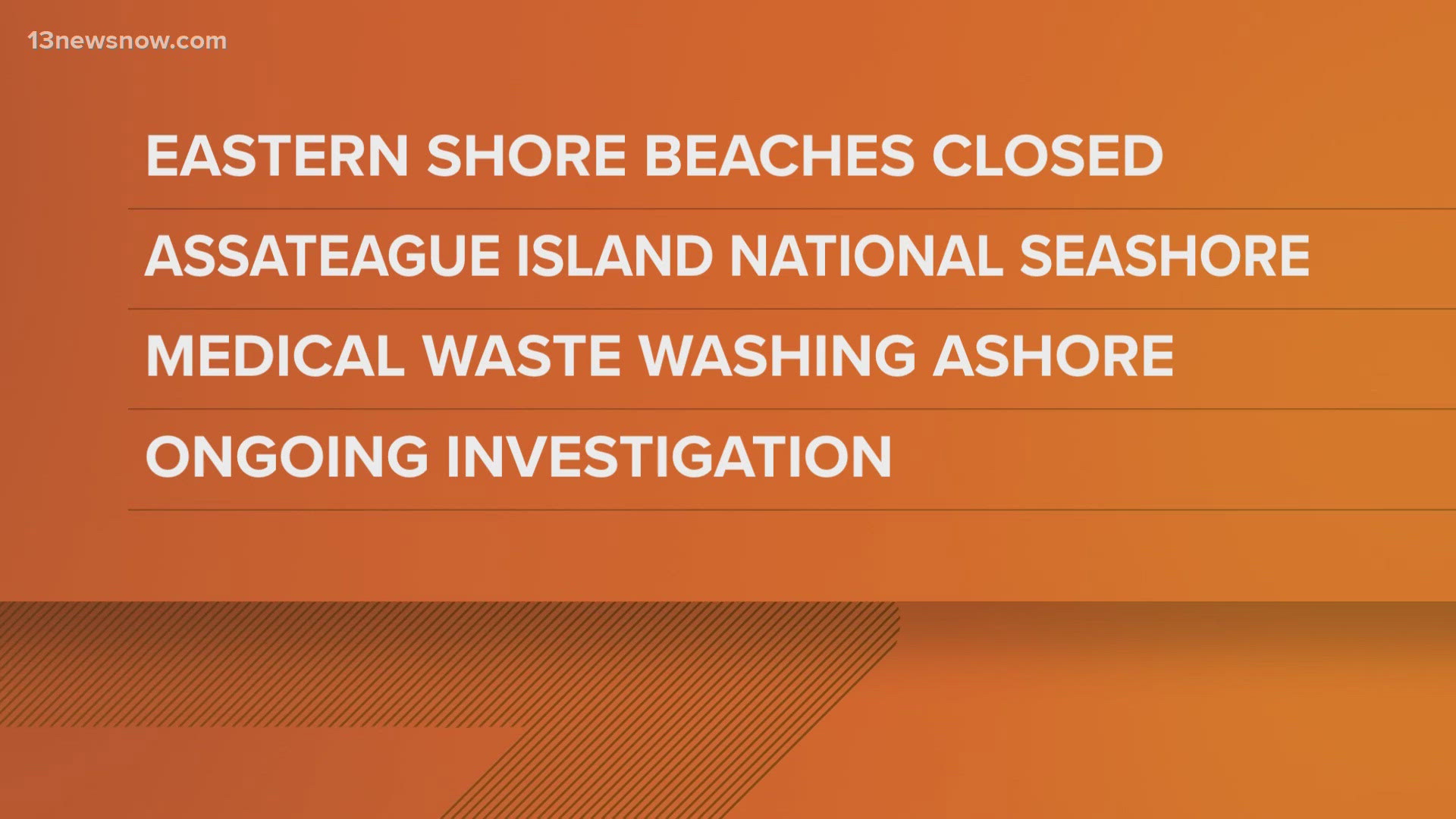Sharks are a common visitor to Delmarva waters, but the more than 30 tracked by OCEARCH don't usually ping during the week-long Shark Week on Discovery in July.
November and May are popular months for the famed sharks with social media accounts carrying thousands of followers to surface off Delaware, Maryland and Virginia beaches.
It is part of the natural migration period, traveling in the spring and the fall between their northern breeding grounds and their winter home near Florida.
Delmarva has seen its share of famed sharks, but none more popular than Mary Lee.
"She’s the most famous real shark in history," said Chris Fischer, founder of OCEARCH, the organization that tracks and studies sharks. "She has undone a lot of what 'Jaws' did, especially on Delmarva. She led us all over the place and was the first real big domino in solving the North Atlantic shark puzzle. There will never be another Mary Lee."
The 16-foot, 3,400-pound great white has more than 129,000 followers on Twitter, but Mary Lee has not had a registered ping since 2017. But Fisher said that the battery in her tracker has died.
Most trackers last five years, and that is how long the tracker was on Mary Lee before it died.
Trackers, too, tend to run out of battery power faster when a shark is more active, and Mary Lee was a very active shark, Fisher said.
Mary Lee took trackers to previously uncharted areas for sharks, getting a glimpse into how they mate and gaining a better understanding of how the shark population is doing.
In North America, sharks are starting to return to their position as apex predators, Fisher said.
"Sharks are returning to abundance, meaning fish are," he added. "We are becoming a model for the world."


Sharks greatly impact the overall population of other fishes because they are the apex predators, meaning they are on the top of the food chain.
With the shark population on the rise once again, that means they are able to regulate the secondary predators, such as fish and seals.
These animals were damaging the overall fish population because they, as secondary predators, were able to eat without a predator eating them.
"Lots of big sharks means there will be more fish sandwiches, lobster tacos and oysters," Fisher said. "You know, the food we all love."
It is similar to when the wolf was reintroduced to Yellowstone National Park, which greatly improved the health of the overall ecosystem when a top-tier predator was released back into its natural environment.
Outside of the United States, though, it is a "catastrophe," Fisher said about the overall shark population.
They are being "crushed" worldwide for their fins for dishes like shark fin soup as well as their meat.
"They reproduce so late in life they don’t handle the pressure," Fisher said. "The second-tier predators explode, and if they’re on the reef, the reef dies. It is a real difficult situation for sharks outside the US."
But on the east and west coasts of the United States, the population is doing well.
Other famed Delmarva sharks
Two other sharks known to frequent the waters off Delmarva, Hilton and Miss Costa, have been providing exciting opportunities for researches, Fisher said.
Hilton, a 12-foot, 1,300-pound great white, is very exciting, Fisher said. Hilton last pinged off Delmarva on Dec. 10, 2017.
"He is showing us a secondary mating site in Canada," Fisher said. "We tagged him off Hilton Head, not Cape Cod, and he has not gone (to Cape Cod). He spent all last mating season off Nova Scotia, and he just went back there two days ago."
This data has been "groundbreaking," Fisher said, because Cape Cod is the only known mating ground for great white sharks along the eastern seaboard.
If there is another site in Nova Scotia, Fisher said, that would be a big discovery.


"We believe Hilton is the one that has showed us there are multiple mating areas," Fisher said. "And it is amazing what he has showed us."
Miss Costa, a slightly heavier great white tipping the scales at 1,600 pounds, has also been very exciting for researchers, Fisher said. The shark last pinged off Delmarva on Nov. 2, 2017.
When she was tagged, they did not think she was of proper age to begin mating, however, recent tracking might suggest otherwise.
"If she does not return to Cape Cod she is probably pregnant," Fisher said. "We are starting to think she is pregnant. If she goes back to the Cape she is probably going to mate, but if she doesn’t, she’s pregnant and we are hoping she can show us where she will be gestating and having those babies."
With these two sharks, OCEARCH is putting together a puzzle "hundreds of millions of years old," Fisher said.
Overall, they are winning the battle to learn more about sharks, he added.


They have tagged more than 30 sharks, and they want to get to 60.
If their trip to Nova Scotia in the fall yields more sharks, then they will be well on their way, Fisher said.
OCEARCH even has a contest for people to join them to their expedition to Nova Scotia in the fall, Fisher said.
People can go to http://www.wannatagalong.com to enter. The winning entrant will be able to join OCEARCH on their trek to Nova Scotia and get to name a shark.
But scientists who study sharks are very excited about the progress they have made when it comes to shark research.
"You got to have the data to know," he added. "Know we are starting to have those pieces of the puzzles. But our white sharks are going through a good recovery on the east coast, so we know we are going in the right directions."



